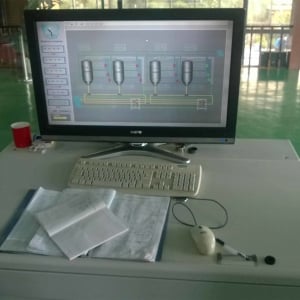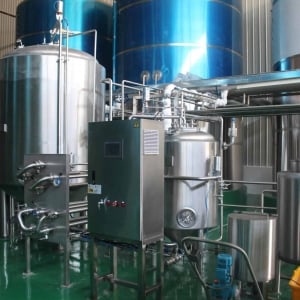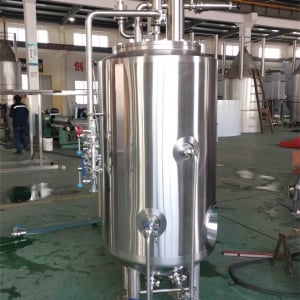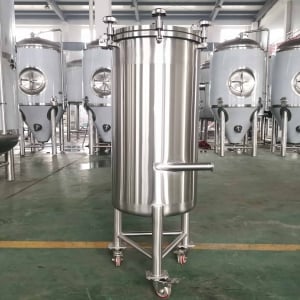Wine Making Kits for Sale
Wine making is an art that has captivated humanity for centuries. For those who wish to bring this craft into their own homes, wine making kits offer an accessible and enjoyable way to start. Whether you’re a novice looking to dip your toes into winemaking or an experienced enthusiast seeking to streamline your process, there’s a kit out there for you. This comprehensive guide will walk you through everything you need to know about wine making kits for sale, from understanding the equipment involved to choosing the right supplier and beyond.
Why Choose a Wine Making Kit?
Choosing a wine making kit can significantly simplify the winemaking process. These kits come with all the essential components you need to produce high-quality wine at home. The convenience, cost-effectiveness, and ease of use make them an attractive option for both beginners and seasoned winemakers.
Key Benefits of Wine Making Kits
- Convenience: Kits include all necessary equipment and ingredients, saving time on sourcing items individually.
- Cost-Effective: Bundled components are often cheaper than buying items separately.
- User-Friendly: Designed for ease of use, with detailed instructions that guide you through each step.
- Quality Control: Kits are curated to ensure compatibility and quality, reducing the risk of errors.
Guide to Wine Making Kit Equipment
Understanding the components of a wine making kit is crucial for a smooth winemaking experience. Here’s a detailed look at the typical equipment included in most kits.
Essential Equipment in Wine Making Kits
- Primary Fermenter: A large, food-grade container where the initial fermentation takes place.
- Carboy: A glass or plastic jug used for secondary fermentation.
- Airlock and Bung: Devices that allow gases to escape during fermentation while preventing contamination.
- Hydrometer: A tool for measuring the specific gravity of the wine, indicating sugar content and fermentation progress.
- Siphoning Tubes: Used for transferring wine between containers.
- Bottling Equipment: Includes bottles, corks, and a corker for final packaging.
- Sanitizing Solution: Ensures all equipment remains sterile to avoid contamination.
Table: Types of Equipment in Wine Making Kits
| Equipment | Description | Purpose |
|---|---|---|
| Primary Fermenter | Large, food-grade container | Initial fermentation |
| Carboy | Glass or plastic jug | Secondary fermentation |
| Airlock and Bung | Devices allowing gas escape but blocking contaminants | Ensures safe fermentation |
| Hydrometer | Tool for measuring specific gravity | Tracks sugar content and fermentation progress |
| Siphoning Tubes | Tubes for transferring wine | Moves wine between containers |
| Bottling Equipment | Includes bottles, corks, and corker | Final packaging of wine |
| Sanitizing Solution | Chemical solution for cleaning equipment | Prevents contamination |

The Wine Making Process Explained
Winemaking involves several stages, each crucial to producing a quality product. Here’s a step-by-step guide to the process.
1. Preparation
Begin by sanitizing all your equipment. This step is vital to prevent any unwanted bacteria from spoiling your wine. Once everything is clean, gather your ingredients: grape juice or concentrate, water, yeast, and any additional additives specified by your kit.
2. Primary Fermentation
Combine your grape juice or concentrate with water in the primary fermenter. Add the yeast and any other ingredients included in your kit. Secure the lid and attach the airlock. Over the next 5-7 days, the yeast will convert sugars into alcohol, producing CO2 which escapes through the airlock.
3. Secondary Fermentation
After primary fermentation, transfer the wine to a carboy for secondary fermentation. This stage can last several weeks to a few months, allowing the wine to clarify and develop its flavors. The airlock remains in place to prevent oxidation and contamination.
4. Bottling
Once fermentation is complete and the wine has cleared, it’s time to bottle. Siphon the wine from the carboy into clean bottles, leaving a bit of space at the top. Cork the bottles securely and let them age according to the instructions provided in your kit.
5. Aging and Enjoying
Aging allows the flavors to meld and mature. Depending on the type of wine, this can range from a few months to several years. Patience is key here; the longer you wait, the better the wine will taste.
Features of Wine Making Kits for Sale
Different wine making kits come with varying features. Here’s a detailed look at what to expect when purchasing a kit.
1. Kit Types
There are several types of wine making kits, each catering to different levels of expertise and wine preferences.
- Beginner Kits: These kits are designed for newcomers and include easy-to-follow instructions, basic equipment, and simple recipes.
- Intermediate Kits: Aimed at those with some experience, these kits offer more advanced equipment and a wider variety of wine styles.
- Advanced Kits: For the seasoned winemaker, these kits include high-end equipment and complex recipes, allowing for greater customization and experimentation.
2. Ingredient Quality
The quality of ingredients in a wine making kit greatly affects the final product. Look for kits that use high-quality grape juice or concentrate, and reputable yeast strains.
3. Customization Options
Some kits allow for customization, offering additional ingredients or the ability to adjust recipes to suit your taste. This can be a great way to experiment and create unique wines.
Table: Wine Making Kits and Their Features
| Kit Type | Features | Ideal For |
|---|---|---|
| Beginner Kits | Basic equipment, simple instructions, easy recipes | Newcomers |
| Intermediate Kits | Advanced equipment, variety of wine styles | Some experience |
| Advanced Kits | High-end equipment, complex recipes | Seasoned winemakers |
| Customizable Kits | Additional ingredients, adjustable recipes | Experimenters and enthusiasts |
Capacity, Space, and Design of Wine Making Kits
When selecting a wine making kit, it’s important to consider your available space, the kit’s capacity, and its design.
1. Capacity
Wine making kits come in various sizes, typically ranging from 1 gallon to 6 gallons. Choose a capacity that matches your production goals and storage space.
2. Space Requirements
Ensure you have enough space to store the equipment and bottles. A dedicated area with stable temperatures and minimal light is ideal for fermentation and aging.
3. Design and Layout
The design of the equipment can affect ease of use and efficiency. Look for ergonomic designs that simplify the winemaking process, such as easy-to-clean fermenters and user-friendly bottling tools.
Table: Wine Making Kit Capacities and Space Requirements
| Capacity | Suitable For | Space Requirements |
|---|---|---|
| 1 Gallon | Small batches, beginners | Minimal space, fits on countertops |
| 3 Gallons | Intermediate use, small families | Requires more space, small storage areas |
| 6 Gallons | Large batches, enthusiasts | Dedicated space, larger storage areas |
Price Range and Suppliers of Wine Making Kits
The price of wine making kits can vary significantly based on the features and quality of the equipment and ingredients. Here’s a look at what you can expect.
1. Price Range
- Budget Kits: Typically range from $50 to $100. These kits are perfect for beginners and those looking to try winemaking without a large investment.
- Mid-Range Kits: Cost between $100 and $250. These kits offer better equipment and more variety in wine styles.
- Premium Kits: Priced at $250 and above. They include high-quality ingredients and advanced equipment for serious winemakers.
2. Top Suppliers
Several reputable suppliers offer a range of wine making kits. Consider factors such as customer reviews, return policies, and additional resources when choosing a supplier.
Table: Suppliers and Price Range of Wine Making Kits
| Supplier | Price Range | Kit Types Offered | Additional Resources |
|---|---|---|---|
| Northern Brewer | $50 – $300 | Beginner to Advanced | Tutorials, customer support |
| Midwest Supplies | $60 – $250 | Beginner to Intermediate | Online guides, FAQs |
| MoreWine | $70 – $350 | All levels | Workshops, expert advice |
Installation, Operation, and Maintenance of Wine Making Kits
Proper installation, operation, and maintenance are crucial for successful winemaking. Here’s a guide to help you through these processes.
1. Installation
Setting up your wine making kit involves assembling the equipment and preparing the fermentation area. Follow the instructions provided in your kit to ensure everything is set up correctly.
2. Operation
Operating your wine making kit involves following the winemaking process steps mentioned earlier. Pay attention to the instructions and handle all equipment and ingredients with care to ensure the best results.
3. Maintenance
Regular maintenance of your equipment is vital for producing high-quality wine. Clean and sanitize all tools thoroughly after each use, and periodically inspect them for wear and tear.
Table: Installation, Operation, and Maintenance of Wine Making Kits
| Process | Description | Tips |
|---|---|---|
| Installation | Assemble equipment, prepare fermentation area | Follow instructions, ensure proper setup |
| Operation | Follow winemaking steps, handle equipment carefully | Read instructions, monitor fermentation progress |
| Maintenance | Clean |
and sanitize equipment, inspect regularly | Use proper cleaning solutions, store correctly |
Choosing the Right Supplier for Wine Making Kits
Selecting the right supplier can make a significant difference in your winemaking experience. Here are some factors to consider.
1. Product Range
A good supplier should offer a wide range of kits to suit different needs and experience levels. This allows you to find a kit that matches your specific requirements.
2. Customer Reviews
Check customer reviews and ratings to gauge the reliability and quality of the supplier. Positive reviews and high ratings are indicators of a trustworthy supplier.
3. Support and Resources
Look for suppliers that offer additional resources such as tutorials, FAQs, and customer support. This can be especially helpful if you encounter any issues or have questions during the winemaking process.
Table: How to Choose a Wine Making Kit Supplier
| Factor | Importance | Tips |
|---|---|---|
| Product Range | Wide variety of kits to match your needs | Check supplier’s catalog for variety |
| Customer Reviews | Indicates reliability and quality | Read reviews on multiple platforms |
| Support & Resources | Additional help and guidance | Look for suppliers offering tutorials and support |
Pros and Cons of Wine Making Kits
Every product has its advantages and limitations. Here’s a comparison of the pros and cons of using wine making kits.
Advantages
- Convenience: All-in-one kits simplify the winemaking process.
- Cost-Effective: Often cheaper than buying individual components.
- Beginner-Friendly: Ideal for those new to winemaking, with detailed instructions.
Disadvantages
- Limited Customization: Kits may not offer much flexibility for experimentation.
- Quality Variance: The quality of kits can vary, affecting the final product.
- Initial Investment: High-quality kits can be expensive upfront.
Table: Comparing Pros and Cons of Wine Making Kits
| Advantages | Disadvantages |
|---|---|
| Convenient and user-friendly | Limited customization options |
| Cost-effective | Quality can vary between kits |
| Ideal for beginners | High-quality kits can be expensive |
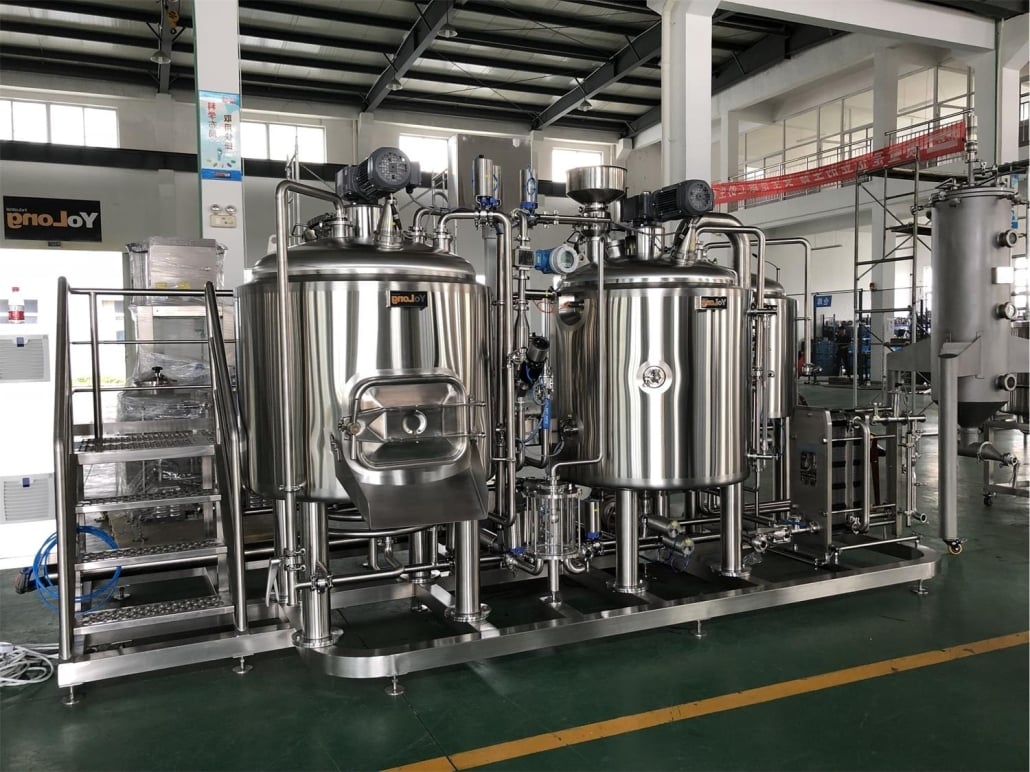
FAQ
| Question | Answer |
|---|---|
| What is included in a typical wine making kit? | Most kits include a primary fermenter, carboy, airlock and bung, hydrometer, siphoning tubes, bottling equipment, and sanitizing solution. |
| How long does it take to make wine with a kit? | The entire process can take anywhere from a few weeks to several months, depending on the type of wine and the kit used. |
| Can I customize my wine making kit? | Some kits offer customization options, allowing you to add ingredients or adjust recipes to suit your taste. |
| What should I consider when choosing a kit? | Consider your experience level, the types of wine you want to make, the quality of ingredients, and the supplier’s reputation. |
| How much space do I need for wine making? | Space requirements vary, but you’ll need a clean, stable area for fermentation and aging, typically ranging from a countertop to a dedicated room. |
Conclusion
Wine making kits provide a fantastic way to start your winemaking adventure. With the right kit, you can produce delicious wines at home, enjoying both the process and the final product. Consider your experience level, space, and budget when choosing a kit, and don’t hesitate to explore the different types available. Cheers to your winemaking success!


